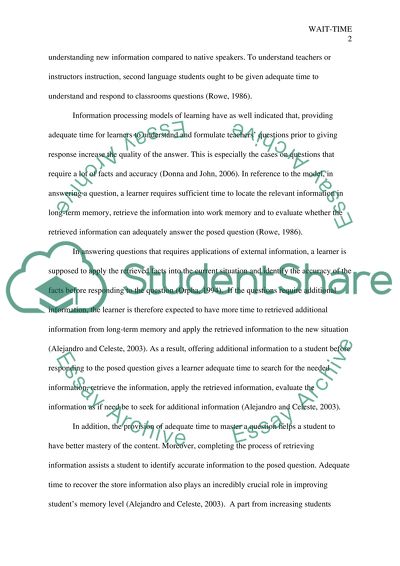How does increased wait time affect the quantity of correct responses Essay. Retrieved from https://studentshare.org/education/1466466-how-does-increased-wait-time-affect-the-quantity
How Does Increased Wait Time Affect the Quantity of Correct Responses Essay. https://studentshare.org/education/1466466-how-does-increased-wait-time-affect-the-quantity.


